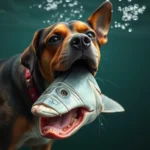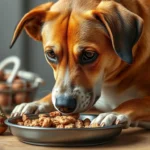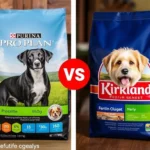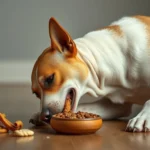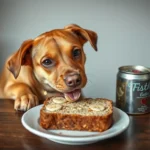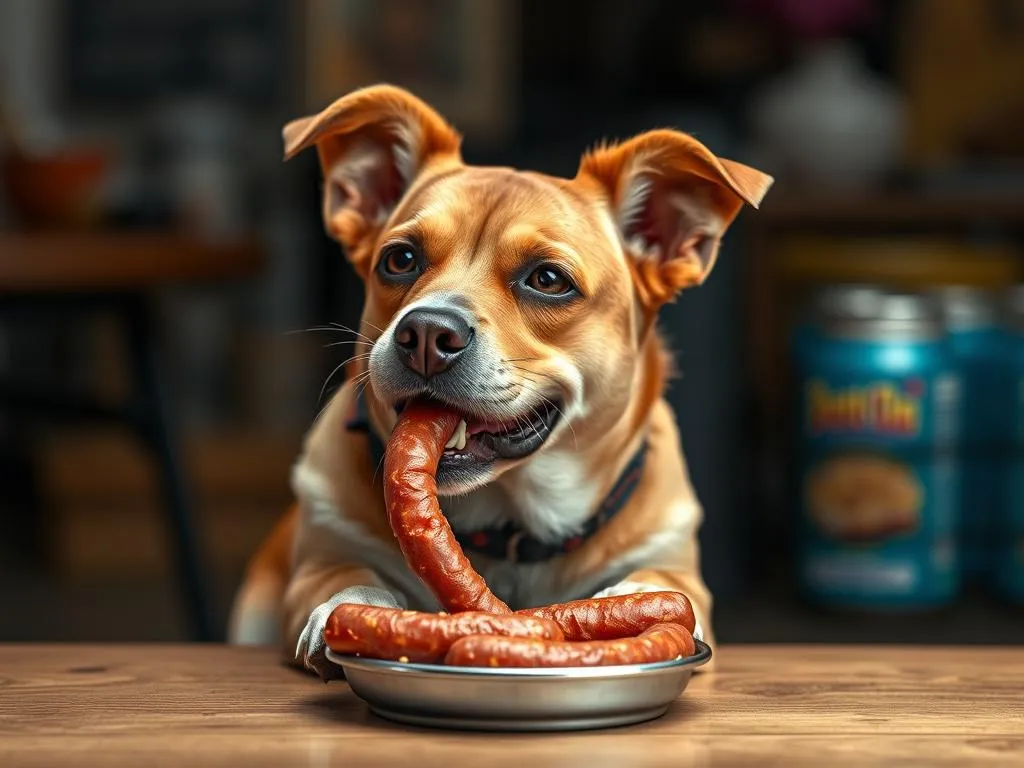
Understanding what our furry friends can and cannot eat is crucial for their health and well-being. Dog nutrition plays a vital role in ensuring that our pets lead long, happy lives. As pet owners, we often find ourselves asking whether certain human foods are suitable for our dogs. One such question that arises frequently is, can dogs eat chorizo? This article aims to explore the safety and implications of feeding chorizo to dogs, providing you with the necessary information to make informed dietary choices for your canine companions.
Understanding Dog Nutrition
Basic Nutritional Needs of Dogs
Dogs, like humans, require a balanced diet to thrive. Their nutritional needs can be broken down into three primary macronutrients:
- Proteins: Essential for muscle development, repair, and overall growth. Dogs need high-quality protein sources to maintain their health.
- Fats: These provide energy and help in the absorption of fat-soluble vitamins. However, the type and amount of fat in a dog’s diet must be carefully monitored.
- Carbohydrates: While not essential, carbohydrates can provide a source of energy and help with digestion when included in moderation.
In addition to these macronutrients, vitamins and minerals are critical for various bodily functions, including immune response, bone health, and skin condition. A balanced diet that meets these needs is crucial for your dog’s overall health.
Common Human Foods and Dogs
Many pet owners may wonder which human foods are safe for dogs. While some human foods can provide beneficial nutrients, others can be harmful or even toxic.
Safe Human Foods for Dogs:
– Lean meats (like chicken or turkey)
– Carrots and green beans
– Apples (without seeds)
– Plain rice and potatoes
Unsafe Human Foods for Dogs:
– Chocolate
– Grapes and raisins
– Onions and garlic
– Avocados
Understanding these distinctions helps in creating a safe and healthy diet for your dog.
What is Chorizo?
Description and Ingredients
Chorizo is a type of pork sausage that is popular in Spanish and Mexican cuisines. It’s known for its rich, spicy flavor, which comes from a variety of spices, including paprika and garlic. There are two main types of chorizo:
- Spanish Chorizo: This is typically cured and can be eaten sliced without cooking. It has a smoky flavor and is often used in tapas.
- Mexican Chorizo: This is usually uncooked and must be cooked before consumption. It is spicier and often contains additional spices like chili powder.
Nutritional Profile of Chorizo
Chorizo is high in protein but also contains a significant amount of fat and sodium. Here’s a breakdown of its typical nutritional content per 100 grams:
- Calories: 455 kcal
- Protein: 25 g
- Fat: 38 g (of which saturated fat can be quite high)
- Sodium: 1,500 mg
In addition to these macronutrients, many commercial chorizos contain preservatives and additives, which may not be suitable for dogs.
Can Dogs Eat Chorizo?
Safety Concerns
When it comes to the question, can dogs eat chorizo, the answer is not a straightforward yes or no. While dogs may enjoy the taste of chorizo, there are several safety concerns to consider:
-
High Fat Content: The high fat content in chorizo can lead to obesity and related health issues in dogs. Foods rich in fat can also cause pancreatitis, a severe and painful condition.
-
Sodium Levels: Chorizo is typically high in sodium, which can be harmful to dogs. Excessive salt intake can lead to salt toxicity, causing symptoms like excessive thirst, urination, and lethargy.
-
Spices and Seasonings: Many types of chorizo contain spices like garlic and onion, which are toxic to dogs. Even small amounts can lead to gastrointestinal upset and more severe health issues.
Potential Health Risks
Feeding your dog chorizo can pose several health risks, including:
-
Obesity: Regularly feeding high-fat foods like chorizo can contribute to weight gain, leading to obesity. This can significantly impact your dog’s overall health, increasing the risk of diabetes, heart disease, and joint problems.
-
Gastrointestinal Issues: Dogs that consume fatty or spicy foods might experience gastrointestinal distress, leading to symptoms such as diarrhea, vomiting, or abdominal pain.
-
Pancreatitis: This is a serious condition that can result from consuming high-fat foods. Symptoms include severe abdominal pain, vomiting, and lethargy. In severe cases, it can even be life-threatening.
Allergies and Sensitivities
Chorizo may also pose risks for dogs with food allergies or sensitivities. Common allergens in dog diets include proteins from beef, chicken, and lamb, but some dogs can also be sensitive to ingredients found in processed meats.
Signs of food allergies to watch for include:
- Itchy skin or hotspots
- Gastrointestinal upset (vomiting or diarrhea)
- Swelling of the face or paws
If you suspect your dog may have a food allergy, it’s crucial to consult your veterinarian for guidance.
Alternatives to Chorizo
Safe Treat Options for Dogs
If you’re looking for safe alternatives to chorizo, consider lean meats that are dog-safe, such as:
- Chicken breast: Cooked and unseasoned.
- Turkey: Another lean option, best served plain.
- Fish: Salmon or sardines (make sure they are boneless and cooked).
You can also explore healthy dog treats or create homemade treats using dog-safe ingredients.
Incorporating Variety into Dog Diets
A balanced diet is essential for your dog’s health. Alongside their regular dog food, you can safely incorporate the following human foods:
- Carrots: A low-calorie treat that many dogs love.
- Blueberries: Packed with antioxidants and vitamins.
- Pumpkin: Good for digestion and a tasty addition to meals.
Always introduce new foods gradually and monitor how your dog reacts.
Expert Opinions and Recommendations
Veterinarian Insights
Veterinarians generally advise against feeding dogs processed meats like chorizo. The high fat, sodium, and potential toxins from spices can pose serious health risks. Regularly consulting with your veterinarian about your dog’s diet can help ensure they receive the necessary nutrients without the risks associated with certain human foods.
Pet Nutritionists’ Perspectives
Pet nutritionists emphasize the importance of a well-balanced diet tailored to your dog’s specific needs. They recommend focusing on high-quality dog food that meets all nutritional requirements and consulting with professionals before introducing new human foods into your dog’s diet.
Conclusion
In summary, while the question of can dogs eat chorizo might tempt many dog owners, the risks far outweigh the benefits. The high fat and sodium content, combined with harmful spices, make chorizo an unsuitable choice for your furry friend. Prioritizing your dog’s health and safety is essential, and sticking to a balanced diet rich in safe foods will ensure they live a happy, healthy life.
Always consult with your veterinarian or a pet nutritionist when considering changes to your dog’s diet, and remember to think twice before sharing your favorite human foods with your beloved canine companion.
Frequently Asked Questions (FAQs)
Can dogs eat cooked chorizo?
While cooking might reduce some risks, the high fat and sodium levels in chorizo remain harmful to dogs.
What should I do if my dog accidentally eats chorizo?
Monitor your dog for signs of distress, such as vomiting or lethargy. If they show any concerning symptoms, contact your veterinarian.
Are there any safe ways to incorporate chorizo into my dog’s diet?
It is generally not recommended to give chorizo to dogs. Instead, consider healthier meat options that are safe for canine consumption.
How can I transition my dog to a healthier diet?
Introduce new foods gradually, mixing them with their current food to help them adjust. Consult with your veterinarian for personalized advice.
In caring for our dogs, understanding their dietary needs and the implications of human foods like chorizo is fundamental to their health and happiness. By making informed choices, we can ensure our pets lead vibrant, fulfilling lives.
